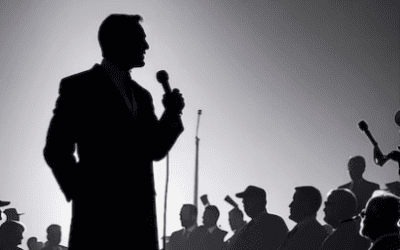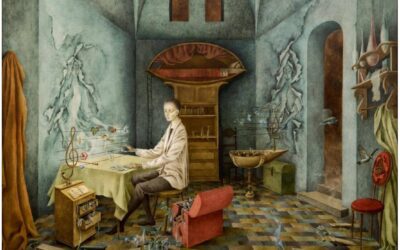The Rise and Fall of the Order of the Solar Temple
What was The Order of the Solar Temple
The Order of the Solar Temple was a destructive cult that operated in the late 20th century, leaving a tragic legacy of mass suicides. Founded by Joseph Di Mambro and Luc Jouret, the cult blended elements of esotericism, New Age spirituality, and apocalyptic thinking to attract followers seeking meaning and transcendence. This essay will examine the origins, practices, and ultimate downfall of the Order of the Solar Temple through historical, psychological, and sociological lenses.
Elements Appropriated from Other Belief Systems
In the words of religious scholars, the Order of the Solar Temple exhibited a pattern common to many cults – its core tenets were an amalgamation of ideas taken from other traditions, with little that was truly original. From Gnostic Christianity, Di Mambro borrowed the concept of attaining spiritual enlightenment through secret knowledge revealed only to initiates. He also promoted an apocalyptic worldview, prophesying an imminent end to the current cosmic cycle.
The cult heavily drew on the mythos of the historical Knights Templar, claiming to be descendants of the medieval order and adopting their symbols and rituals. Like the Templars, the Solar Temple was structured as a hierarchical initiatory society, with members progressing through ascending degrees of knowledge.
Jouret’s influence can be seen in the Solar Temple’s incorporation of New Age ideas that were in vogue at the time. Astrological and numerological symbolism suffused the group’s cosmology, and adherents studied a wide range of occult and esoteric traditions. However, some of the cult’s practices, like ritual magic ceremonies aimed at hastening a “transition” to a new world, were unique innovations of the leadership.
Biography of Joseph Di Mambro, Founder
Joseph Di Mambro, the mastermind behind the Solar Temple, was a complex figure whose personal demons and delusions of grandeur fueled the cult’s tragic trajectory. Born in France in 1924, Di Mambro was involved in esoteric circles from a young age. He claimed to have visions of spiritual “masters” and past lives as a Knight Templar.
Psychologically, Di Mambro exhibited classic narcissistic traits, believing himself to be a messianic figure destined to lead humanity into a new age. Some mental health experts have also suggested schizotypal tendencies, given his intense involvement in magical thinking and unconventional beliefs.
Despite his obvious mental health issues, Di Mambro was a charismatic leader who attracted devoted acolytes through his esoteric knowledge and commanding presence. He was aided in this by Luc Jouret, a homeopathic doctor whose wealth helped bankroll the cult in its early years.
Like many cult leaders, Di Mambro used coercive control tactics to ensure the loyalty and obedience of his followers. He utilized the common techniques of “love bombing” new recruits with affection, then gradually isolating them from outside influences and instilling paranoia about the external world. Members were encouraged to cut ties with family and devote themselves wholly to the cause. What set the Solar Temple apart was its fixation on astrology and the idea that members were bound to each other by “cosmic laws” from past incarnations. Initiations and punishments were timed according to astrological transits. In the most chilling example of Di Mambro’s manipulative abilities, he convinced followers that ritualistic suicide was necessary to complete the “transit” to a higher spiritual plane.
Timeline of the Order of the Solar Temple
The Order of the Solar Temple traces its origins to 1984, when Di Mambro founded the Golden Way Foundation as a vehicle for his esoteric teachings. In 1989, he partnered with Luc Jouret to reestablish the group as the Solar Temple, laying claim to the Templar heritage. They opened their first lodges in Geneva and Quebec, tapping into renewed global interest in alternative spiritualities.
The early 1990s were a period of expansion for the Solar Temple. It published a series of manifestos and texts by members elaborating its complex theology and apocalyptic predictions. The group’s wealth allowed it to purchase ritual sites and compounds in Switzerland, France, and Canada. At its peak, it had several hundred members worldwide.
However, the cracks began to show in 1993, when Jouret was investigated by Canadian authorities for possession of illegal firearms. The following year, several high-ranking members defected from the cult, leading to increased paranoia and isolation among the remaining followers.
These tensions culminated in the horrific events of October 1994, when 53 members were found dead in Switzerland and Quebec in an apparent mass murder-suicide pact. Investigations revealed that some victims, including children, were executed by the leaders for being “traitors”. Additional group suicides took place in France in late 1995 and March 1997 by surviving members still loyal to Di Mambro’s apocalyptic vision.
Cult’s Relationship to Cultural Zeitgeist
To fully understand the Solar Temple’s appeal, it must be placed in the cultural context of its time. The late 1980s and early 1990s saw widespread economic anxieties in the aftermath of recessions, leading some to seek out alternative communities and lifestyles. This was compounded by a growing disillusionment with mainstream institutions like government and religion, driving people to find meaning through individualized spirituality.
The Solar Temple tapped into the era’s pervasive millennial thinking and apocalypticism. As the year 2000 approached, many New Age and esoteric groups became preoccupied with prophecies around the dawning of a new era for humanity. The cult’s promise of transcending the doomed Earth for a higher plane of existence on a distant star system resonated with people feeling unmoored by rapid social changes.
Psychological Perspectives on the Cult
From a depth psychology perspective, the Solar Temple can be understood as a means for followers to resolve deep-seated personal insecurities. Di Mambro presented himself as an idealized father figure and savior who could protect and enlighten his “children”. By submitting to his authority, members could project their own unresolved issues onto the guru archetype.
The cult’s elaborate rituals and mythos also provided a framework for adherents to contextualize and contain their existential anxieties. By situating themselves within a cosmic drama of reincarnation and stellar ascension, they could imbue their lives with greater meaning and purpose.
On a social level, the Solar Temple offered a surrogate family and community for people feeling alienated from mainstream society. Its revisionist history claiming Templar origins gave members a sense of belonging to an ancient lineage at a time of uncertainty about the future. In a world that felt out of control, the cult promised a path to regain power and “graduate” to the next level of existence.
Adjacent Cultural Phenomena
The Solar Temple was one manifestation of a wider fascination with arcane knowledge and conspiracy theories in the 1990s. Its claims of Templar heritage echoed popular books and films of the time that speculated about the lost secrets of the medieval order. When the group became the subject of criminal investigations, this fueled rumors of a Satanic ritual abuse panic that was spreading through Quebec.
The cult can also be situated within a broader trend of “Year Zero” communities – groups that sought to escape the ills of modern society by creating isolated utopian settlements. The Solar Temple’s doctrine combined this back-to-the-land ethos with an apocalyptic belief that salvation required leaving the Earth entirely.
Another related cultural current was the rise of UFO religions, which fused New Age spirituality with belief in extraterrestrial contact. While the Solar Temple didn’t explicitly reference aliens, its promise of “transit” to the star Sirius reflected a similar cosmology of higher beings guiding humanity’s evolution from beyond Earth.
Demise of the Cult
In the wake of the 1994 mass suicides, family members and police sought to deprogram surviving Solar Temple adherents. Some were successfully extracted through interventions and counseling. Others experienced personal epiphanies that led them to recognize the manipulation they had experienced.
However, a core group of members could not let go of their belief in Di Mambro’s messianic status and the necessity of “transit” through death. Even after the loss of their leaders, splinter groups carried on the Solar Temple teachings and participated in the subsequent ritual suicides in France.
Di Mambro himself orchestrated the 1994 killings and died alongside his victims. Luc Jouret also perished in the event. The revelation that children were deliberately sacrificed demolished any remaining legitimacy of the cult in the public eye.
Lessons and Applications
The tragic saga of the Solar Temple provides valuable insights into the dynamics of cults that are relevant beyond this specific case. It illustrates common warning signs that a group may be destructive, such as having a charismatic leader who demands unquestioning obedience, isolating members from their prior social supports, and promoting an us-versus-them mentality.
Solar Temple members fell prey to manipulative techniques that are endemic to many toxic situations. New recruits were “love bombed” and made to feel special, then gradually indoctrinated into a worldview of absolute devotion to the leader. Doubts and questions were suppressed in favor of the leader’s black-and-white thinking. Members were led to invest so much of themselves in the group that leaving felt impossible, even when the group’s dysfunction became apparent.
Understanding these coercive dynamics can help people recognize and resist unhealthy interpersonal patterns in a range of settings, from abusive intimate relationships to high-pressure religious and political movements. Cult tactics are also present in some workplace situations, particularly those that foster unhealthy levels of allegiance to charismatic leaders and penalize dissent.
Mental health professionals emphasize the importance of maintaining connections outside any one belief system as a bulwark against undue influence. Cultivating critical thinking skills and the ability to spot logical fallacies can also inoculate against deceptive doctrine. Those drawn to high-control groups are often seeking meaning and purpose – finding healthy ways to meet these essential human needs is key to preventing radicalization.
While the Order of the Solar Temple is an extreme example, its methods of control are disturbingly common in human relations. Studying its history can equip us to confront the destructive impulses within ourselves and our communities, and identify warning signs before it’s too late. As philosopher George Santayana famously said, “Those who cannot remember the past are condemned to repeat it.” Remembering the victims of the Solar Temple – and working to build a world with greater individual freedom and stronger interpersonal boundaries – is perhaps the most fitting memorial.
Bibliography
- Mayer, J.-F. (1996). Les Mythes du Temple Solaire. Geneva: Georg.
- Introvigne, M. (1995). Ordeal by Fire: The Tragedy of the Solar Temple. Religion, 25(3), 267–283.
- Hall, J. R., Schuyler, P. D., & Trinh, S. (2000). Apocalypse Observed: Religious Movements and Violence in North America, Europe and Japan. London: Routledge.
- Buscaglia, T. V. (1998). Psychopathology of Cult Leaders: The Case of Joseph Di Mambro and the Order of the Solar Temple. Cultic Studies Journal, 15(1), 40-57.
- Kaplan, J., & Lööw, H. (Eds.). (2002). The Cultic Milieu: Oppositional Subcultures in an Age of Globalization. Walnut Creek, CA: Altamira Press.
- Roland, P. (2006). The Cult of the Black Sun: Di Mambro and the Solar Temple. London: Arcturus Publishing.
- Robinson, B. A. (2007). “Order of the Solar Temple.” In The Encyclopedia of Cults, Sects and New Religions. New York: Infobase Publishing.
- Palmer, S. J. (2011). *The New Heretics of France: Minority Religions, la République, and the Government-
Other Cults and Conspiracy Theories



























0 Comments